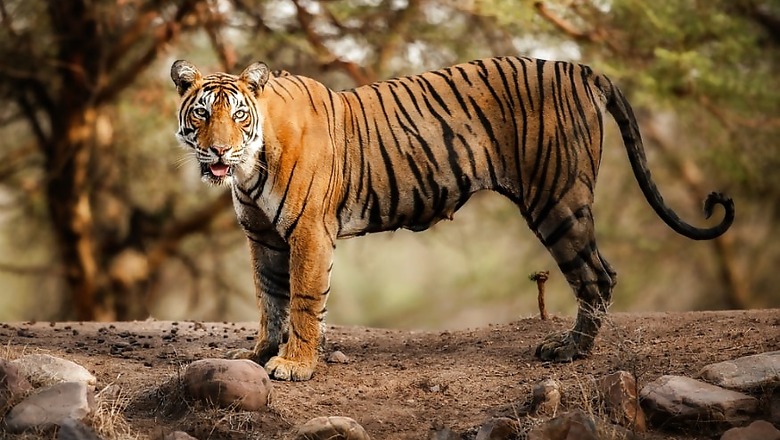
views
Every year, July 29 is celebrated as International Tiger Day in order to spread awareness on the conservation and promotion of the protection of the natural habitat of tigers. Also known as Global Tiger Day, International Tiger Day was first established in 2010 at Saint Petersburg Tiger Summit in Russia to raise awareness about the decline of wild tiger numbers and to encourage the work of Tiger conservation.
In the Summit, a declaration was made that Governments of tiger populated countries had vowed to double the tiger population by 2020.
As the tiger’s population is under constant decline, here are 10 good reasons and facts to make you think about the necessity to the conservation of tigers.
1. Tigers are the largest wild cats in the world, with an adult tiger having weighing up to 363kg, which is equal to ten ten-year-olds. Interestingly, tigers are the third-largest carnivore on land after polar bears and brown bears.
2. Unlike most members of the cat family, tigers like water. They are good swimmers and often cool off in pools or streams. That is why tiger conserves also have pools.
3. Tigers are the only cat species that are completely stripped. They even have stripes on their skin.
4. Looking back at the past, the fossil remains of tigers found in parts of China are believed to be 2 million years old.
5. Less than 100 years ago, tigers could be found all throughout Asia. However, hunting and habitat loss have put the population at risk, with their range been reduced to around 7% of its former size.
6. It's estimated that tiger hunts are only successful about one in every 10 to 20 attempts. However, these are generally nocturnal hunters, which mean they won't pass up the chance for a daytime snack when it's available.
7. There are five subspecies of tiger existing today: Bengal, South China, Indochinese, Sumatran and Siberian. Sadly, three of them have become extinct – Caspian, Bali and Javan.
8. The average lifespan of a wild tiger is 10 - 15 years. However, on rare occasion, they have been known to live up to 26 years in the wild.
9. Female tigers are amazing. After a gestation period of a little more than three months, they give birth to two-three blind and helpless cubs and become the sole provider for them until they reach independence at two years of age.
10. Tigers do not live in permanent groups, unlike lions. They live solitary lives except when females are raising cubs. The term for a group of tigers is "streak."




















Comments
0 comment